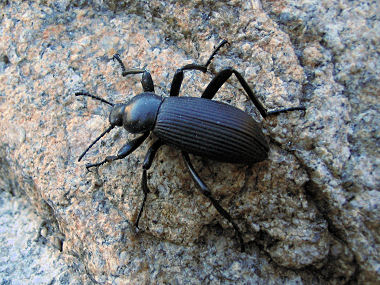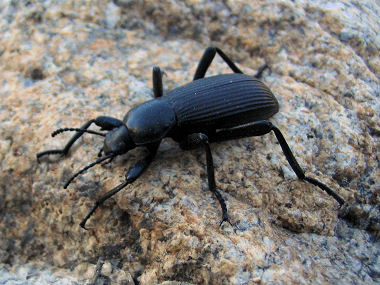One of the most commonly encountered
desert insects, stinkbugs are active year round. During the summer they
are most active at twilight and early sunrise (crepuscular) or night
(nocturnal). In the fall & winter, they revert to a more diurnal
lifestyle .
Pinacate beetles are often seen as they walk around in the desert,
seemingly wandering at random. Studies have shown that they are probably
in search of food, which they find by odor. They primarily eat detritus
of grasses and forbs (forbs are the plants that often bloom with wild
flowers). .
Pinacate beetles are often seen as they walk around in the desert,
seemingly wandering at random. Studies have shown that they are probably
in search of food, which they find by odor. They primarily eat detritus
of grasses and forbs (forbs are the plants that often bloom with wild
flowers).
|
Stinkbugs are more formally
called 'Darkling Beetles' or 'Pinacate Beetles'. |
They are well known for their comical, yet effective,
defense tactics. When alarmed they stand on their heads by bending their
front legs down and extending their rear legs. Depending upon the
species, they exude an oily, smelly secretion, which collects at the tip
of the abdomen or spreads over posterior parts of the body, or they
eject the reddish brown to brown secretion as a spray. Larger desert
species can spray 10 to 20 inches. Most species can spray multiple
times, if necessary. The spray is not painful unless you get it in your
eyes or mouth, where it may cause burning and temporarily blinding. |

